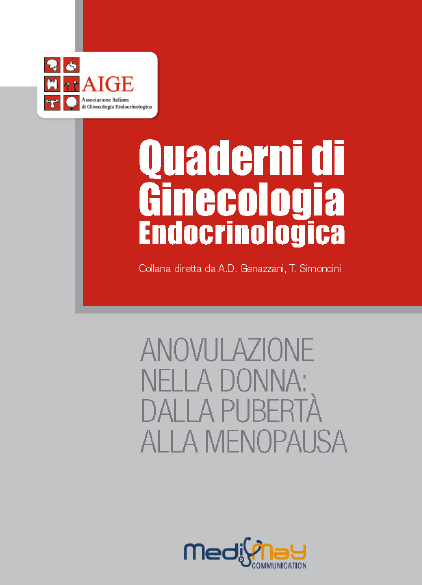-
Jacques Donnez, Robert Hudecek, Olivier Donnez, Dace Matule, Hans-Joachim Arhendt, Janos Zatik, Zaneta Kasilovskiene, Mihai Cristian Dumitrascu, Herv_e Fernandez, David H. Barlow, Philippe Bouchard, Bart C. J. M. Fauser, Elke Bestel, Paul Terrill, Ian Osterloh, Ernest Loumaye.
Efficacy and safety of repeated use of ulipristal acetate in uterine fibroids
Fertil Steril 2015, 2: 519-527 (download)
Abstract
Objective To investigate the efficacy and safety of repeated 12-week courses of 5 or 10 mg daily of ulipristal acetate for intermittent treatment of symptomatic uterine fibroids.
Design Double-blind, randomized administration of two 12-week courses of ulipristal acetate.
Setting Gynecology centers.
Patient(s) A total of 451 patients with symptomatic uterine fibroid(s) and heavy bleeding.
Intervention(s): Two repeated 12-week treatment courses of daily 5 or 10 mg of ulipristal acetate.
Main Outcome Measure(s) Amenorrhea, controlled bleeding, fibroid volume, quality of life (QoL), pain.
Result(s) In the 5- and 10-mg treatment groups (62% and 73% of patients, respectively) achieved menorrhea during both treatment courses. Proportions of patients achieving controlled bleeding during two treatment courses were >80%. Menstruation resumed after each treatment course and was diminished compared with baseline. After the second treatment course, median reductions from baseline in fibroid volume were 54% and 58% for the patients receiving 5 and 10 mg of ulipristal acetate, respectively. Pain and QoL improved in both groups. Ulipristal acetate was well tolerated with less than 5% of patients discontinuing treatment due to adverse events
-
Priya Bhide, Merve Dilgil, Anil Gudi, Amit Shah, Charity Akwaa, Roy Homburg
Each small antral follicle in ovaries of women with polycystic ovary syndrome produces more antimullerian hormone than its counterpart in a normal ovary: an observational cross-sectional study
Fertil Steril 2015, 2: 537-541
Abstract
Objective: To ascertain if subfertile women with polycystic ovary syndrome (PCOS) secrete more antimullerian hormone (AMH) per antral follicle than control women.
Design: Observational cross-sectional study.
Setting: Fertility clinic.
Patient(s): A total of 438 women attending the fertility clinic over a period of 13 months from September 2012 to September 2013.
Intervention(s): Serum concentrations of AMH and the total antral follicle count (AFC) were obtained from women attending the fertility clinic. The ratio of AMH/AFC for each subject was calculated. Women were categorized into three groups: PCOS, polycystic ovarian morphology (PCOM), and control. PCOS and PCOM were defined based on the European Society for Human Reproduction and Embryology/American Society for Reproductive Medicine Rotterdam consensus criteria.
Main Outcome Measure(s): The ratio of AMH/AFC for each subject in the three groups: PCOS, PCOM, and control.
Result(s): The median AMH/AFC ratios in the PCOS, PCOM, and control groups were 1.92, 1.13, and 1.00, respectively. The AMH/AFC ratio was significantly higher in the PCOS group compared with the PCOM and control groups (F[2,152] ¼ 21.82). Women in the three groups were not statistically different regarding age, body mass index, earlier ovarian surgery, and smoking status.
Conclusion(s): Subfertile women with PCOS secrete significantly more AMH per antral follicle than women with PCOM only and control women.
-
Krzysztof Katulski, Adam Czyzyk, Agnieszka Podfigurna-Stopa, Andrea R. Genazzani, Blazej Meczekalski
Pregnancy complications in polycystic ovary syndrome patients
Gynecol Endocrinol, 2015; 2: 87–91
Abstract
Infertility is a widely disputed problem affecting patients suffering from polycystic ovary syndrome (PCOS). As a serious dysfunction, it frequently occurs in PCOS patients. It is, therefore, important to devote more attention to pregnancy in PCOS sufferers. According to various data, the risk of miscarriage in PCOS women is three times higher than the risk of miscarriage in healthy women. Unfortunately, the risk of most frequent pregnancy pathologies is also higher for PCOS patients, as gestational diabetes (GD), pregnancy-induced hypertension and preeclampsia, and small for gestational age (SGA) children. Impaired glucose tolerance and GD in pregnant PCOS patients occur more frequently than in healthy women. A quadruple increase in the risk of pregnancy-induced hypertension linked to arterial wall stiffness has also been observed in PCOS patients. The risk of pre-eclampsia, the most severe of all complications, is also four times higher in those suffering from PCOS. Pre-eclampsia is also more frequent in patients presenting additional risk factors accompanying PCOS, such as obesity or GD. At that point, it should be mentioned that PCOS patients are under 2.5 higher risk of giving birth to SGA children than healthy women. It appears that SGA can be linked to insulin resistance and insulin-dependent growth dysfunction. Therefore, PCOS pregnant women are patients of special obstetrical care.
-
Zdravko Kamenov, Georgi Kolarov, Antoaneta Gateva, Gianfranco Carlomagno, Alessandro D. Genazzani
Ovulation induction with myo-inositol alone and in combination with clomiphene citrate in polycystic ovarian syndrome patients with insulin resistance
Gynecol Endocrinol, 2015; 2: 87–91
Abstract
Background: Insulin resistance plays a key role in the pathogenesis of polycystic ovarian syndrome (PCOS). One of the methods for correcting insulin resistance is using myo-inositol.
Aim: The aim of the present study is to evaluate the effectiveness of myo-inositol alone or in combination with clomiphene citrate for (1) induction of ovulation and (2) pregnancy rate in anovulatory women with PCOS and proven insulin resistance.
Patients and methods: This study included 50 anovulatory PCOS patients with insulin resistance. All of them received myo-inositol during three spontaneous cycles. If patients remained anovulatory and/or no pregnancy was achieved, combination of myo-inositol and clomiphene citrate was used in the next three cycles. Ovulation and pregnancy rate, changes in body mass index (BMI) and homeostatic model assessment (HOMA) index and the rate of adverse events were assessed.
Results: After myo-inositol treatment, ovulation was present in 29 women (61.7%) and 18 (38.3%) were resistant. Of the ovulatory women, 11 became pregnant (37.9%). Of the 18 myoinositol resistant patients after clomiphene treatment, 13 (72.2%) ovulated. Of the 13 ovulatory women, 6 (42.6%) became pregnant. During follow-up, a reduction of body mass index and HOMA index was also observed.
Conclusion: Myo-inositol treatment ameliorates insulin resistance and body weight, and improves ovarian activity in PCOS patients.
-
Jenifer Sassarini, Mary Ann Lumsden, Hilary O.D. Critchley
Sex hormone replacement in ovarian failure- new treatment concepts
Best Practice & Research Clinical Endocrinology & Metabolism 2015, 29: 105-114
Abstract
Premature ovarian failure is associated with decreased bone mass and fractures, and an increased risk of premature death from cardiovascular disease. There is also fertility compromise associated not only with the loss of ovarian function but, in those with pre-pubertal POF, inadequate uterine morphology. A wide variety of hormone replacement regimes are reported, but there is no clear evidence of best practice. Hormone replacement therapy (HRT) and the combined oral contraceptive pill (COCP) will suppress menopausal symptoms; however neither is designed to achieve physiological replacement of estrogen and progesterone. There is evidence that physiological sex steroid replacement is superior to standard hormone replacement, in improving uterine volume as well as an improved blood pressure profile and bone mineral density. Sex steroid replacement therapy is long-term in these women, and therefore it is essential that the risk benefit ratio is optimal to maximise longer term health
-
F. Yarde, Y.T. van der Schouw, H.W. de Valk, A. Franx, M.J.C. Eijkemans, W. Spiering, F.J.M. Broekmans on behalf of the OVADIA study group
Age at menopause in women with type 1 diabetes mellitus: the OVADIA study
Hum. Reprod. 2015, 30: 441-446
Abstract
STUDY QUESTION Is type 1 diabetes a determinant of advanced ovarian ageing, resulting in an early age at natural menopause?
SUMMARY ANSWER No clear evidence was provided that type 1 diabetes is a determinant of accelerated ovarian ageing resulting in an early menopause.
WHAT IS KNOWN ALREADY The association between type 1 diabetes and early menopause has been examined previously with inconsistent results.
STUDY DESIGN, SIZE, DURATION A cross-sectional study was performed in 140 post-menopausal women with, and 5426 post-menopausal women without, diabetes.
PARTICIPANTS/MATERIALS, SETTING, METHODS Both women with and without diabetes had experienced natural menopause. Study participants filled out a standardized questionnaire including report of their age at last menstrual period. Differences in menopausal age were analysed using linear regression analyses, with adjustment for possible confounders.
MAIN RESULTS AND THE ROLE OF CHANCE Mean age at natural menopause was 49.8 ± 4.7 years in women with type 1 diabetes and 49.8 ± 4.1 in women without diabetes. Linear regression analyses showed that type 1 diabetes was not associated with an earlier menopause compared with the reference group without diabetes, after adjustment for age, smoking history and parity (difference in age at menopause between women with type 1 diabetes and reference group 0.34 years, 95% confidence interval −0.34, 1.01).
LIMITATIONS, REASON FOR CAUTION Age at menopause was self-reported and assessed retrospectively. We had no information regarding microvascular complications therefore a possible association between vascular health and menopausal age could not be investigated.
WIDER IMPLICATIONS OF THE FINDINGS It has been hypothesized that the possible mechanism behind an accelerated ovarian ageing process in type 1 diabetes is prolonged poor glycaemic control and subsequent effects on vascular health. The improved glycaemic control during the last decades may have prevented vascular damage from occurring to an extent that would affect organ function. Nevertheless, the present findings are reassuring for reproductive health prospects in women with type 1 diabetes.
-
Lucıa Sanz-Salvador, Miguel Angel Garcıa-Perez, Juan J Tarın, Antonio Cano
Bone metabolic changes during pregnancy: a period of vulnerability to osteoporosis and fracture
Eur J Endocrinol 2015, 172: R53–R65 (download)
Abstract
Changes in bone density and bone markers suggest that pregnancy is associated with deterioration of bone mass in the mother. The metabolism of calcium resets to allow for the needs imposed by the building of the fetal skeleton. The fetus contributes to the process through the output of regulators from the placenta. Understanding of the whole process is limited, but some changes are unambiguous. There is an increase in the circulating levels of vitamin D, but its functional impact is unclear. Fetal parathyroid hormone (PTH) and PTH-related peptide (PTHrp) play an indirect role through support of a calcium gradient that creates hypercalcemia in the fetus. Placental GH, which increases up to the end of pregnancy, may exert some anabolic effects, either directly or through the regulation of the IGF1 production. Other key regulators of bone metabolism, such as estrogens or prolactin, are elevated during pregnancy, but their role is uncertain. An increase in the ratio of receptor activator of nuclear factor kappa B ligand (RANKL) to osteoprotegerin (OPG) acts as an additional pro-resorbing factor in bone. The increase in bone resorption may lead to osteoporosis and fragility fracture, which have been diagnosed, although rarely. However, the condition is transitory as long-term studies do not link the number of pregnancies with osteoporosis. Prevention is limited by the lack of identifiable risk factors. When fractures are diagnosed, rest, analgesics, or, when indicated, orthopedic intervention have demonstrated efficacy. Systemic treatment with anti-osteoporotic drugs is effective, but the potential harm to the fetus imposes caution in their use.






